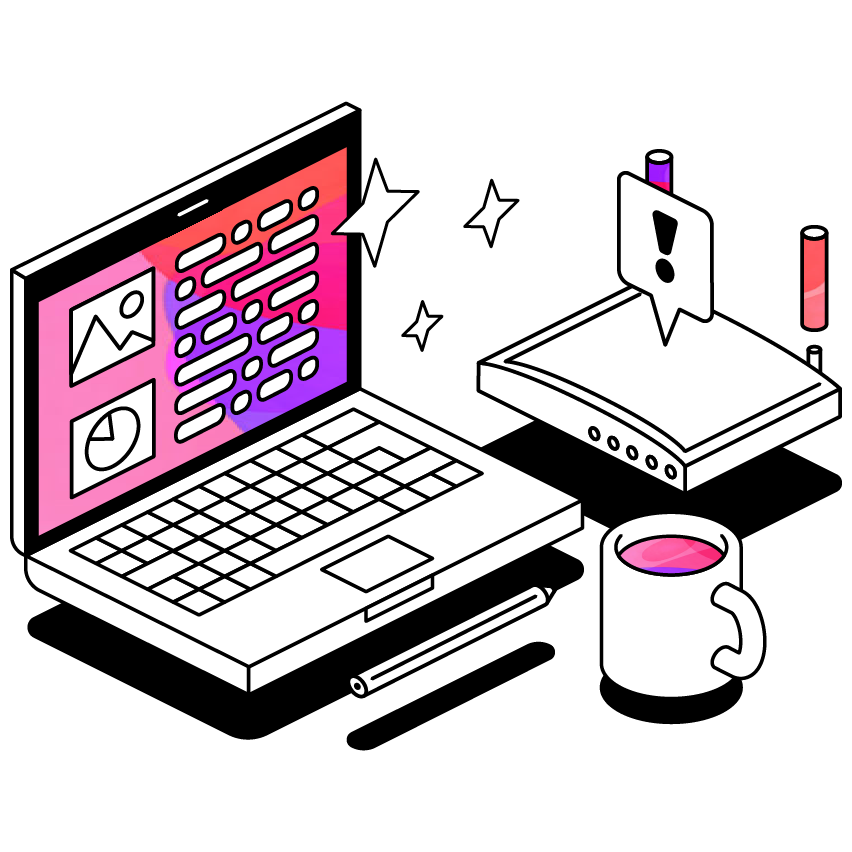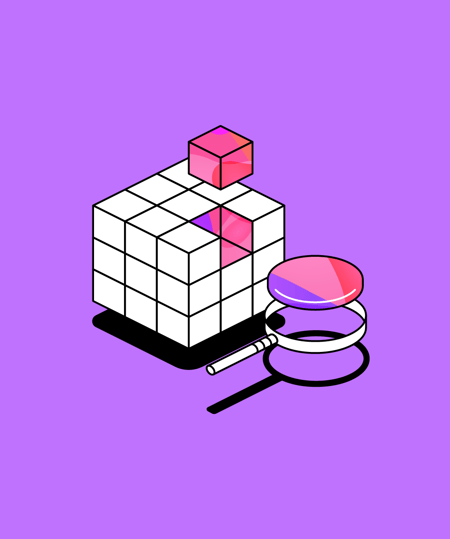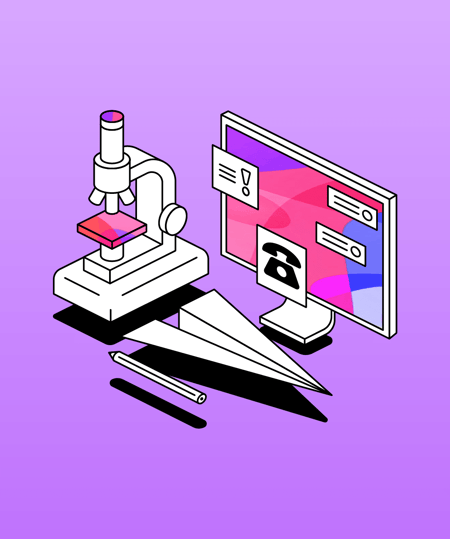Access All Areas: Northwestern University on how to launch new AT well
In part one of our interview, Jim Stachowiak, the Accessible Technology Strategy and Operations Lead at Northwestern University, shares the evolution of note taking support on campus.
 5 min read
5 min read
 Published: 24 Jan 2024
Published: 24 Jan 2024
 Paddy Heaton
Paddy Heaton


In recent years, there has been a significant shift in the way note taking is being facilitated in higher education. Gone are the days when students relied solely on handwritten notes to capture essential information from lectures.
In this interview, Jim Stachowiak, the Accessible Technology Strategy and Operations Lead at Northwestern University, shares his insights into the evolution of note taking support on campus.
He explains how the university has transitioned from relying heavily on peer note takers to embracing technology-based solutions - and shares the challenges they faced during the transition, especially the pushback they received from instructors about being recorded.
How has the note taking support landscape at Northwestern changed over the last few years?
For a long time we were doing a significant amount of peer note taking. That was the primary note taking support for students that had accommodations.
Going into the pandemic, we had started to move away from peer note taking, and we had jumped into utilizing Livescribe Smartpens and Sonocent Audio Notetaker. At that time, smart pens were what most people chose to use.
But then as the pandemic happened we've seen a huge shift away from the smart pens. We had about 60 students using them - I think this last spring we had 3. There was a huge shift over to computerized note taking. Glean was the tool that really hit it off for everybody.
So we were at a point several years ago where we would have a couple hundred students with peer note takers. We're down to maybe 20 now, and we've got about 80 students using Glean, and a few students on Livescribe pens. But Glean is kind of the runaway favorite with our students right now.
That being said, I mean, we do kind of guide folks into that. We try and not use peer notes as a first option for people.
We ask them to try Glean first. But when given the choice between Glean or a smart pen, it's more often than not Glean at this point.
Are there any other reasons you moved away from peer notes?
We had a few reasons.
One, I don't think anybody actually believed that peer notes were the best option for students.
Everybody takes notes differently. Everybody thinks different things are important or has different, you know, brevity or length to their notes. And so it's not a great solution to begin with because it doesn't always give every student what they need.
The second reason was - and I think this is a problem at a lot of universities - we had a hard time finding peer note takers.
We do pay our peer note takers, we offer a stipend. But even with doing that, we had a really hard time getting students to step forward and provide those notes as a peer note taker. So when we had hundreds of students looking for peer notes, we were matching at a really low percentage.
I think we were matching maybe 30/40% of those students with a peer note taker. We’re on a quarter system, so we have ten weeks. If you don't find somebody quick, you fall behind almost immediately.
That issue, combined with the fact that we didn't believe that peer notes were the best solution for people, is what really made us want to move away from that.
As a secondary benefit, you know, we're paying for all these peer note takers and we would pay for whatever accommodation a student would need.
But using technology provides a better solution for individuals. They get exactly what instructors are talking about. They're more engaged in the process. And for us, it ultimately was cheaper than than hiring peer note takers to take notes for every student, for every single class a student was taking as well.
And students get those notes immediately. They're not waiting for somebody to upload them. They're not waiting three weeks into the quarter for somebody to be matched with them. They get them more quickly.
It's a better solution overall.
What’s your process for launching a new technology on campus?
So I’ll tell you what we did when we were looking to do a big transition from peer notes to technology.
We started by finding 10 to 15 students that were really interested in trying the technology. And we gave it to them for a quarter. We did a survey at the beginning and we did a survey at the end and then we interviewed them, almost like a focus group.
Having that data is what really made us able to launch it with everyone else. When we started going to this as our primary means of providing note taking support, we had data that we could point to and say
- “This is what your peers that use this at this institution are saying about their experience with this”
- “This is what they're saying about their learning experience”
- “This is what they're saying about this accommodation versus having peer notes previously”
And that was really powerful. That allowed us to make more of an inroad with Glean and have individuals be more likely to say, “yeah, I'll give that a try as opposed to peer notetakers”.
We also trained all of our access coordinators, assistant directors, anybody who's going to be working with students on how to use Glean.
How did you work with Faculty when launching this technology?
We had to do some work with instructors as well. You know, whenever you're looking at a recording tool, instructors are a little bit wary of that.
So one of the things that we developed with our general counsel was something we call the Fair Use Agreement that indicated that students understood that this was for their use.
They weren't going to share, sell, post, anything like that. And our students all signed that agreement at the beginning of every quarter.
So we had something that we could point instructors to saying:
- This is an accommodation
- The students are going to be recording
- But they've signed off on this and they understand that they can't share those recordings out of Glean
That alleviated a lot of concerns from instructors. Having that convincing data for students, having folks that understand how the tools work that can assist in getting students started on it, and then being able to answer instructor questions around concerns were the key pieces to launching it successfully here.
How have students responded to Glean?
They love it.
They really, really like it - especially our students that are in social science and humanities classes, they use it all the time.
Having that dashboard where you can see when the last time a student used it has been really been helpful for us because we know that this is being used.
We know it's being used on a regular basis. We know that our students really appreciate having the ability to have it as a backup and be able to focus in class.
The things we hear are that:
“Prior to using Glean, I was nervous that I was going to miss information and I spent a lot of time trying to write everything down. Now, knowing that I have that recording to go back to, I can zero in on listening in class and spend more energy listening and being engaged with learning in class.”
We've heard that from a lot of students.
We've heard from a lot of students with ADHD that it's super helpful to be able to recognize that they're starting to drift a little bit in class and drop a pin in Glean and give themselves that five minutes to recalibrate and be able to focus again, knowing that they won't have missed that information and they can jump right to where that pin is in the recording and be able to listen to that again.
I was really surprised, but I've heard a lot that using Glean has significantly reduced anxiety for students. And I think that comes back to an anxiety around missing information or not understanding something right away.
Having Glean and knowing you're not going to miss anything, that you can engage more in class, and that you have something that you can go back and rely on to remind you of things that you may have forgotten.
So yeah, I would say they've responded pretty positively to this. And again, we've just seen those numbers continue to rise.
This article is transcribed from a webinar held in August 2023.
More from Disability Services
View All
 4 min read
4 min read
Navigating budget restrictions: a comprehensive guide to maximizing departmental resources
Higher education professionals face increasing pressure to do more with less and maximize limited resources. In this article, we explore tips, strategies, and success stories for adopting assistive technology and effectively planning budgets.

 2 min read
2 min read
The power of inclusive language and technology
In a recent webinar, Leslie Smith, Manager of the Access Center at Volunteer State Community College, shared a powerful insight into the transformative impact of language and technology.

 3 min read
3 min read
The future of disability services in higher education
Disability services are experiencing significant change. To explore this, and how they may continue to evolve, we sat down with Christa Price, Assistive Technology Specialist at California State University, Northridge, and Aaron Holmes, Access Specialist at MiraCosta College.






